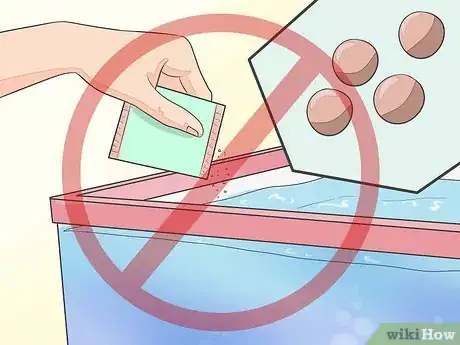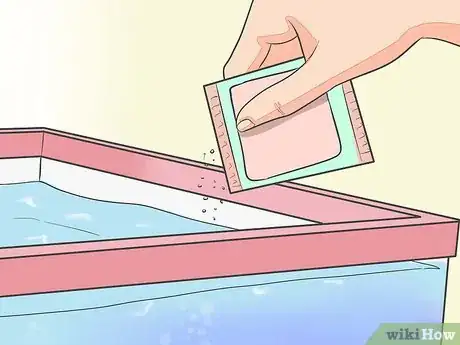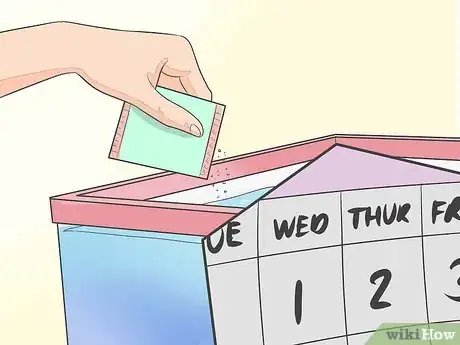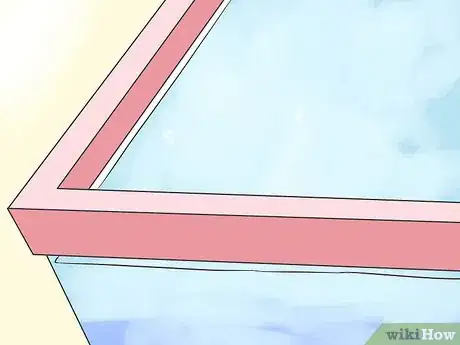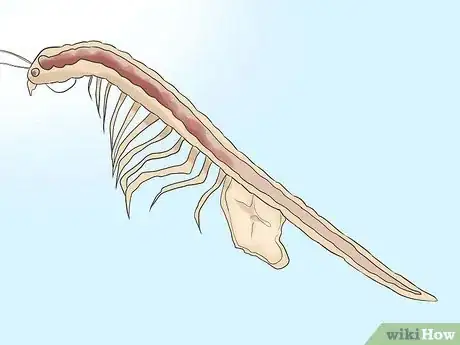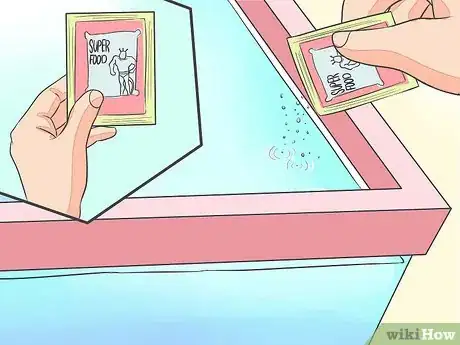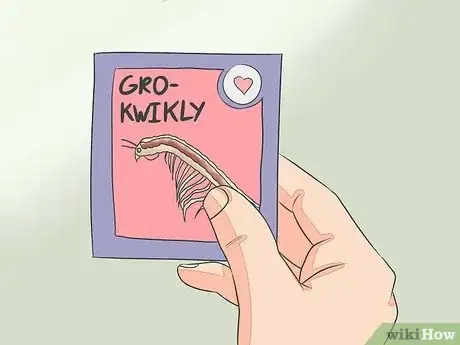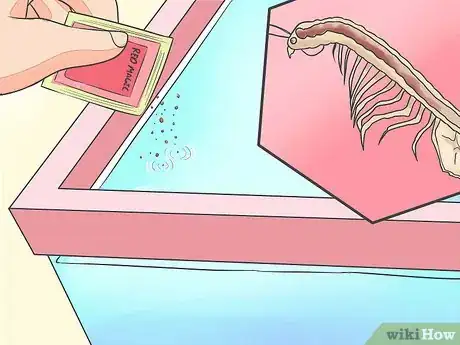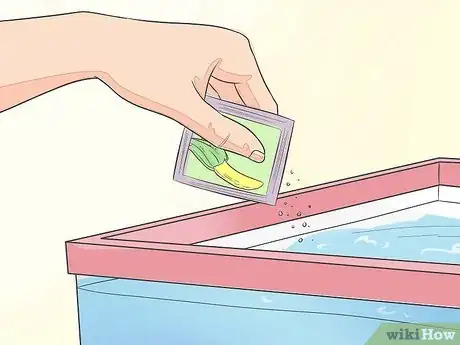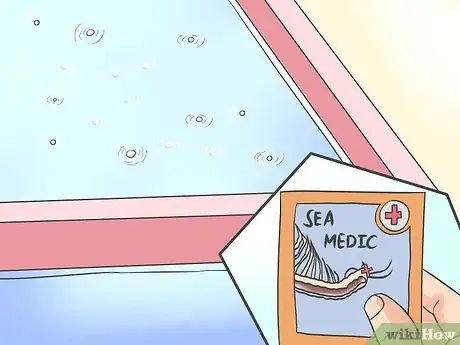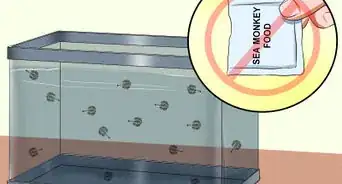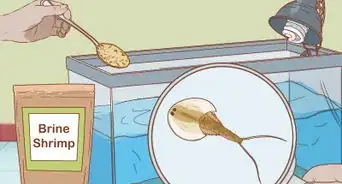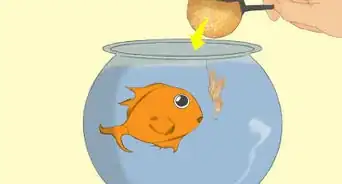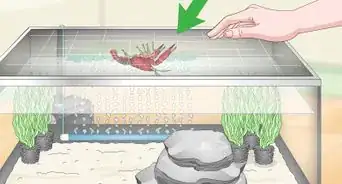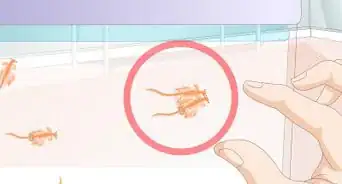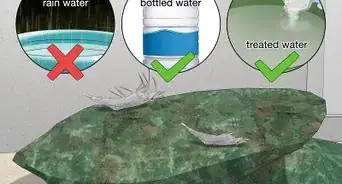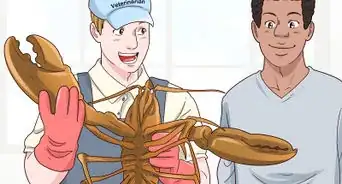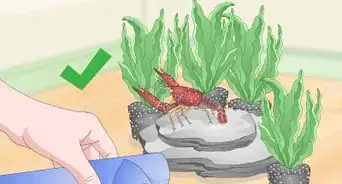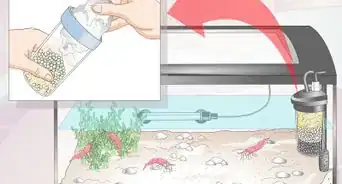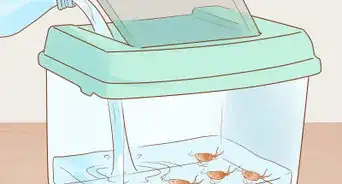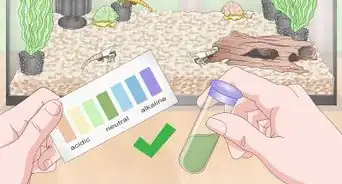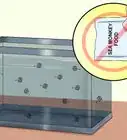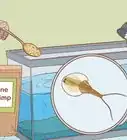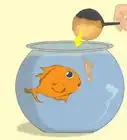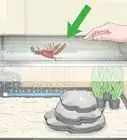wikiHow is a “wiki,” similar to Wikipedia, which means that many of our articles are co-written by multiple authors. To create this article, 22 people, some anonymous, worked to edit and improve it over time.
wikiHow marks an article as reader-approved once it receives enough positive feedback. In this case, 95% of readers who voted found the article helpful, earning it our reader-approved status.
This article has been viewed 79,188 times.
Learn more...
Sea Monkeys are actually a brand name for a breed of brine shrimp, whose eggs are sold through the mail along with the materials necessary to hatch them. Since using the wrong amount of food can kill the entire tank relatively quickly, it's important to learn the correct feeding schedule, along with the signs of underfed or overfed brine shrimp.
Steps
Feeding Sea Monkeys from a Kit
-
1Don't feed a new tank until 5 days after hatching. Sea monkeys begin life by feeding off the nutrients in their egg sac. Check on the eggs daily to see if they've begun to hatch. Once they have, wait five days before you start to feed them.[1]
- Newly hatched sea monkeys can be extremely small. Move your tank to a well-lit area and examine the water closely for tiny, pale, moving dots. Use a magnifying glass if necessary.
- If the sea monkey eggs do not hatch within 48 hours, move the tank to an area with stronger light. Keep the tank away from direct sunlight, however, as this can cause it to overheat
-
2Feed the sea monkeys a tiny amount of Growth Food. Use the smaller end of the feeding spoon to pick up the food, and move one of these small spoonfuls into the tank. If you do not have a feeding spoon, try using a clean plastic straw as a scoop. It's better to give them too little food than too much.Advertisement
-
3Repeat the feeding once every five to seven days. Different handbooks vary in their instructions, but most sea monkey tanks will thrive when fed at intervals of five to seven days.[2] Only increase the feeding rate or amount if your sea monkey population grows much larger than the initial packet's population, and if there is no sediment on the base of the tank.
-
4Skip feedings if the water gets cloudy. If the water becomes cloudy or dirty-looking, stop feeding the shrimp. Wait until the water becomes clear again before adding food.[3] This cloudy appearance is usually the result of too much algae, bacteria, or other organisms that can suffocate the sea monkeys if they continue to grow.[4]
-
5Watch for a dark streak on the sea monkeys as a sign of health. Adult brine shrimp digestive tracks become dark when full. If you see this dark line running across a sea monkey's body, it is probably eating well. If you do not, consider feeding them more often, but only as described below.
-
6Increase feedings cautiously. If you acquire more sea monkeys, or if the population grows, you may need to increase the amount of food or the frequency of feeding. Adjust slowly to avoid killing the tank's population through overfeeding. Reduce the interval between feeding sessions by one day at a time, returning to the old feeding schedule if the water becomes cloudy or the sea monkeys start acting sluggish or uninterested in food. Alternatively, keep the same feeding schedule but switch to the large end of the feeding spoon.
Using Optional Sea Monkey Products
-
1To encourage growth, replace Growth Food with Super Food occasionally. Optionally, you may use Super Food instead of Growth food, but only once every few feeding sessions.[5] This is supposed to cause your sea monkeys to grow larger and more quickly.
-
2For more extreme growth, also feed Gro-Kwickly once a week. Gro-Kwickly is meant to be added with the small scoop no more than once per week, in addition to the ordinary food.[6] This may result in more rapid growth, although the company that makes these products does not explain the difference between this and Super Food.
-
3Use Red Magic instead of normal food, to turn your sea monkeys red. This packet claims to contain vitamins that make your sea monkeys healthier or more energetic. The most noticeable effect, however, may be the pink or red color that the sea monkeys develop. You may need to feed them Red Magic for several feeding sessions before this becomes visible.
-
4Use Banana Treat food instead of normal food occasionally (optional). The back of the Banana Treat packet claims that this food has extra nutrients, so it may not be as unhealthy as some human "treats."[7] However, it appears that this product is only intended as an occasional treat to excite your sea monkeys, instead of regular food. If your sea monkeys are not excited by this food, there is probably no point in using it.
-
5Use Sea Medic if bacteria start growing in your tank. The Sea Medic packet is not a replacement for food. If you see white balls floating in your tank, fight this bacterial infection by adding Sea Medic daily with the small end of the feeding spoon, until the balls are gone.
Community Q&A
-
QuestionI ran out of food. What else can I feed them?
 Community AnswerSea monkeys love algae. They also eat brine-shrimp food that is most likely to be powdered algae food.
Community AnswerSea monkeys love algae. They also eat brine-shrimp food that is most likely to be powdered algae food. -
QuestionWhat type of food can they have?
 Titans - Gaming and moreCommunity AnswerThe main ingredient of sea monkey food is algae, so if you don't have the packet, feed them algae pellets or grow algae.
Titans - Gaming and moreCommunity AnswerThe main ingredient of sea monkey food is algae, so if you don't have the packet, feed them algae pellets or grow algae. -
QuestionHow long does it normally take for sea monkeys eggs to hatch?
 Community AnswerIt really depends. If the water quality is perfect, the eggs will hatch in a day or two. Some eggs will take longer to hatch, or they may not hatch at all. Eggs may be in survival mode and will wait for the water quality to be good in order to hatch.
Community AnswerIt really depends. If the water quality is perfect, the eggs will hatch in a day or two. Some eggs will take longer to hatch, or they may not hatch at all. Eggs may be in survival mode and will wait for the water quality to be good in order to hatch.
Warnings
- Sea monkeys may die if you do not aerate the tank regularly. Sea monkey kits come with an air pump you can use for this purpose.⧼thumbs_response⧽
Things You'll Need
- Sea monkey Growth Food packet
- Small double-sided spoon (comes with sea monkeys)
- Other sea monkey packets (optional)
References
- ↑ http://weirdscifi.ratiosemper.com/seamonkeys/care.html
- ↑ http://weirdscifi.ratiosemper.com/seamonkeys/care.html
- ↑ http://weirdscifi.ratiosemper.com/seamonkeys/care.html
- ↑ http://www.mastermarf.com/2008/04/more-about-sea-monkeys.html
- ↑ http://pictures.mastermarf.com/blog/2009/090306-sea-monkey-packets.jpg
- ↑ http://pictures.mastermarf.com/blog/2009/090306-sea-monkey-packets.jpg
- ↑ https://www.youtube.com/watch?v=0nfYWYRhDLw
About This Article
To make sure you give your Sea Monkeys a balanced diet, wait five days after the eggs hatch before you start feeding them. Then, use the small end of a feeding spoon to scoop food into the tank every 5-7 days. If you notice the water is cloudy, feed your sea monkeys less often. If you decide to give your shrimps more food because of population growth, take care not to increase the amounts too much and use Super Food only once every few feeding sessions. For tips on using special Sea Monkey products, including Gro-Kwickly and Red Magic, keep reading!
